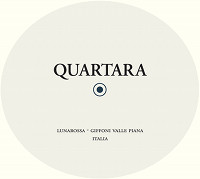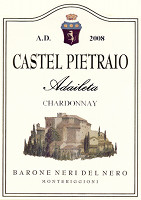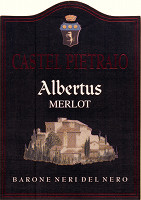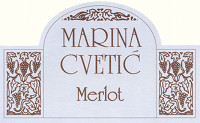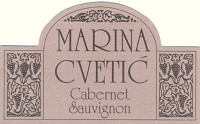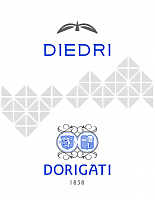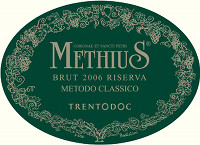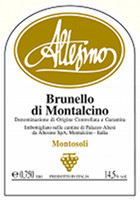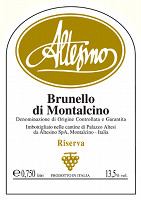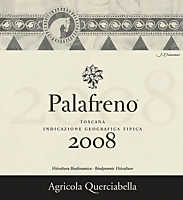|
Wine, when you drink it with the virtue of moderation, certainly is a pleasure.
Pleasure of understanding a millenary culture, pleasure of good company and good
food - wine, since ever, directly recalls convivial pleasures, a beverage having
a high social meaning - and, last but not the least, pleasure for senses. Wine
is also the expression of man's genius, who has been capable of transforming a
matter provided by Nature - grape - into an excellent beverage, by controlling
and interacting with a natural process, which, unavoidably, leads to the
creation of vinegar. Wine, and the pleasure of wine, demands for respect, not
only for the culture and expression of human kind evolution, but also in order
to be understood, to understand the pleasure it can give. With no respect, that
is when it is abused and drunk in excess, wine gives the same kind of respect in
return, by abusing both the health and dignity of whom, recklessly, pays no
respect to it. And, after all, in this case he or she is just not respecting
himself or herself. This is true for everything and wine is no exception:
everything can be “good” or “bad” according on how it is being used or
abused.
Wine is not a pleasure for senses only. Medical science knows, since a long
time, the wise consumption of wine can be beneficial to the health, something
certainly not happening with the excess. The healthy virtue and quality of wine
were known since ancient times: not only it was an ingredient for corroborating
drinks, but also a fundamental ingredient for elixirs made of herbs. On this
regard, it should be noticed the “medical” use they made in the past of sweet
wines, frequently made with grapes affected by noble rot, that is Botrytis
Cinerea. These particular and very expensive wines were prescribed by doctors
for the rehabilitation of patients. Because of their high price and value, this
was a remedy which could be afforded by few people and, of course, there were
few who could pour these wines in their glasses, even for pleasure. Destined to
the rich and noble classes, sweet wines were rarely found in the tables of the
poor people, save the case they had a vineyard and decided to sacrifice
part of the grapes that, allowed to dry, were used for the production of sweet
wines and, in any case, was literally served in very rare occasions and in very
small quantities.
Wine, undeniably, has always caught the interest of men for its
hedonistic qualities, not only for its property of giving pleasure to the
senses. Companion of the good table since the beginning of humanity, in the
course of history, every meal had wine as the “natural” choice for
accompanying food. This, of course, was true in the countries in which vineyard
was widely found in the culture and local economy, in particular, the countries
of the Mediterranean area. Not only in the table, but also in relax moments,
wine has always accompanied the “pleasures of men”, favorite beverage of
social moments, both informal and formal ones. A solemn beverage, with a high
ritual meaning, wine has always been poured at the end of important meetings in
order to celebrate the reaching of an agreement or pact. Moreover, the toasting
represents the highest form of wish for a good health and good company: it is
always made in celebration moments.
|
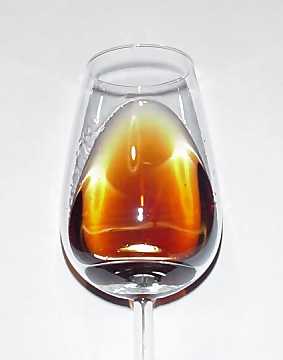 | |
| Appearance is one of the factors making wine
pleasantness | |
|
On this regard, it is interesting to know the etymology of Italian
brindisi, that in English language is translated as to toast.
Brindisi comes from German bring dir's, literally I bring (the
glass) to you as a form of wish and greeting. In English speaking countries it
is used toast instead, which meaning recalls the “toasted” slice of
bread, as, in past times, the English were used to “dip” toasted bread in a
glass of wine before drinking it. The famous Italian cin cin used to make
a toast, has a funny origin. It seems it was introduced from Southern China and
it was a form of kind and friendly greeting used by sailors who were saying
qing qing, literally meaning please, please. The reason for which
this habit became common in Italy - in the past was also common in other
European countries as well - is probably because of the sound glasses made when
they are “touched” at the moment of the toast. Moreover, of Latin origin, the
word prosit, meaning “may it be favorable (to you)”. In any case, wine
has always been associated to a favorable wish and of good health.
Pleasure of the good table, pleasure of the good company, pleasure of exchanging
favorable wishes and, in particular, pleasure of quality wine. Since the
times men discovered how to transform grape juice into an inebriating and
pleasing beverage, they have always tried to make it more and more pleasing and
good. Around wine production, this is something undeniable, there has always
been a sort of competition among those who were capable of making the best wine,
the one capable of giving the best pleasure to the senses of men. This is proved
by the endless debates about this subject, opinions, guides and positions: all
having the same goal, that is to state and determine the best wine, that is, the
most agreeable one having the best quality. In the course of mankind history,
wine has probably been the product of land for which men have debated more than
anything else and for which have been started competitions, even harsh ones, and
for which men put a strong attention about its quality and agreeability. This is
also witnessed, for example, by the many mentions it had in writings and books
since remote times, in which were reported the best wines and the best areas
capable of giving the best.
Appearance, smell, taste, emotions: these are qualities required for a good wine
in order to be considered agreeable. The pleasure of wine is not however
something simple to define, as this is a highly subjective thing and strongly
influenced by mood, culture and, last but not the least, social, psychological
and historical factors. Pleasantness in a wine, or better to say, the taste for
an pleasant wine, has certainly changed in the course of history. A wine
produced at the times of ancient Romans - for example - following wine making
techniques and taste considered to be pleasant at those times, it is very likely
it would not meet the taste of “modern” men. The same, this is very likely
too, can be true for the opposite: the modern reference of taste and
pleasantness of wine, could be considered unpleasant and of bad taste for
ancient Romans.
Witnesses about wines produced in remote times, give the beverage of Bacchus a
basically sweet or evidently sweet taste. Descriptions sometimes give the idea
of a wine with a basically acid taste, maybe because of the scarce knowledge at
those times about wine making. Enology is a science which required centuries of
study and experience in order to understand the vinification process. Moreover,
this can also be because of the difficulties in the keeping of wine or because
of critical conditions which could not allow a complete fermentation. These
considerations could also explain the custom of diluting wine with water -
including seawater, therefore salty - adopted in occasion of symposia in ancient
Greece times or bacchanals in ancient Rome. This practice seems to be adopted in
order to mitigate both sweetness as well as acidity of wine, therefore
increasing its drinkability. On this regard, it should be noticed that, at those
times, drinking a wine non diluted with water - therefore pure - was considered
vulgar and impolite.
Wine, as we know it today, that is with a dry taste, is the product of a wine
making and taste evolution, a practice having a little more than 400 years of
life. The improvement of wine making techniques has been primarily developed
thanks to the work done in many monasteries in Europe, in particular in those
belonging to Benedictine, Cluniacensis and Cistercians orders. Wine, as it is
commonly known, is a fundamental element for the Eucharist in Christian rites,
therefore vineyard and wine were fundamental products for monasteries. This
allowed both the safeguarding of vineyard and wine in Europe, as well as the
concrete and fundamental evolution of enology and it will be thanks to this
knowledge that wine became dry while abandoning its traditional sweet taste. It
is also thanks to the job done in monasteries that allowed the improvement of
one of the most famous wine of all times: Champagne. As it is commonly known,
this renowned wine was improved in the abbey of Saint-Pierre d'Hautvillers by
Dom Pierre Pérignon, although - it should be noticed - refermentation in bottle
was a practice already known at those times and probably of Italian origin.
The pleasure of wine - and everyone would certainly agree on this - is mainly
associated to its quality and, therefore, to the absence of faults. It should be
said that, frequently, a “perfect” wine, with no apparent or evident faults,
can also be considered as boring, predictable in its exact
interpretation. In the last twenty years, the pleasure of wine and the way wine
is seen, underwent many changes, adopting new styles and new fashions,
subsequently denied while emphasizing the characteristics once considered
unpleasant and ordinary. We could think, for example, about the fashion, almost
obsessive, which was very common about twenty years ago which had as its main
protagonist the barrique. At those times, it was enough to say “barrique” or
to mention it in labels, in order to ensure most of the commercial success.
Every wine fermented or aged in barrique, was considered a quality wine, it was
considered as an agreeable and pleasing wine. Today, we see the opposite
fashion: even pronouncing the word “barrique” evokes an opposite feeling,
emblem of the highest sign of a wine making homologation.
Likewise, after having emphasized the use of technology in wine making, capable
of producing impeccable wines, according to a technical point of view,
but having the “fault” of making wines tasting all the same, today the fashion
is to make wine produced with “ancestral” techniques. Today, even the
slightest hint of aromas recalling the use of selected yeast, in general or
trendy terms - or maybe, of opportunity - makes the wine to be classified
as “industrial”. If once the aromas given by the activity of yeast were
considered a sign of wine agreeability, today - for many wine lovers - those
aromas are responsible of worsening the agreeability of wine. Wines produced
with techniques, like to say, less exacting, however capable of giving wine a
sensorial dimension of “past times”, those times, enologically speaking,
denied by the majority and considered as “harsh”. Once wines fermented or aged
in barrique - white and red, with no exception - were easily associated to
quality and, therefore, to a pleasing product. Today, on the contrary, they try
to favor the expression of grapes and territory.
This aspect certainly is desirable, indeed, fundamental and important. Taste and
culture of wine consumers are certainly changed in the last twenty years: it is
undeniable in this period consumers have improved their culture and their
analytic and critical knowledge about wine. This phenomenon certainly is
useful for quality and agreeability of wine: exacting and “competent”
consumers force producers to make wines capable of satisfying these needs, in
other words, wines meeting the favor of market. In fact, today wine is wanted to
have quality - something which is however subjective in many ways - as well as
the quality of representing a territory and its grapes. These concepts are not
unrelated to the concept of wine pleasure as they satisfy the psychological
expectations of consumers who, frequently, are also willing to accept evident
faults, provided it is a wine different from the others.
The pleasure of wine, in the course of centuries, has changed and adapted
according to the fashions and the habits of societies where it is being
produced. Also important, the change - and with that, the model of
agreeability - determined by nutrition habits and cooking. A beverage, today
more than ever, with a hedonistic meaning, wine - also at the table - must be
capable of giving pleasure while meeting the aromas and flavors of modern
cooking. A good wine-food pairing, for example, increases the pleasure of the
table as well as of the wine itself. There is however something we can be
certain of: pleasure and taste of wine are destined to change in future. The
model of quality will change and evolve - this is natural, after all - including
the taste of men. Or it could also be that tastes of a remote time will become a
new fashion, perhaps because of nostalgic and romantic reasons, something
that, undeniably, we are also living in these times.
|


